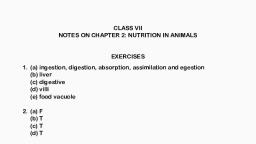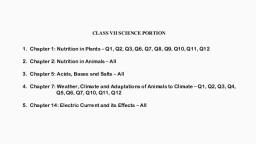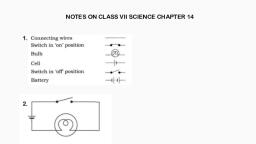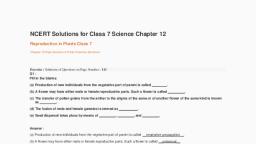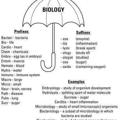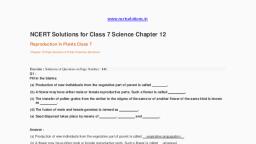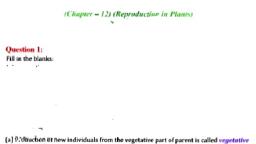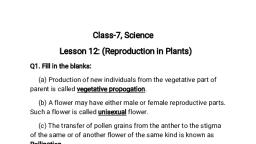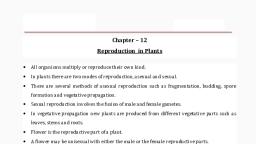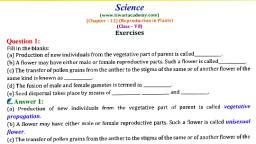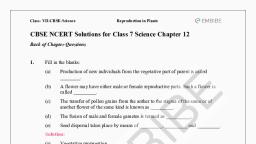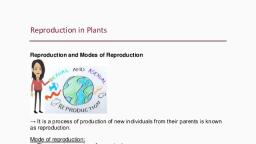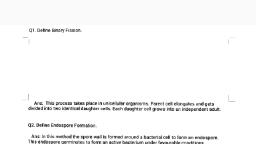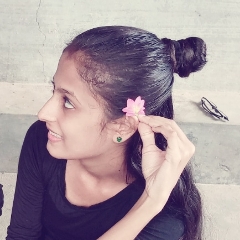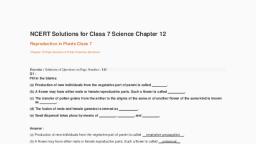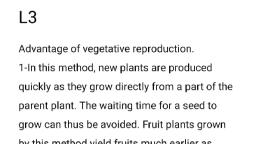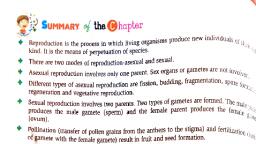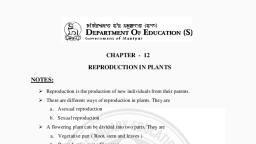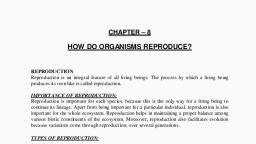Page 1 :
NOTES CLASS VII SCIENCE, CHAPTER 12: REPRODUCTION IN PLANTS, 1. (a) vegetative propagation, (b) unisexual, (c) Pollination, (d) fertilization, (e) wind, water, animals, 2. Asexual modes of reproduction are as follows:, (i) Vegetative propagation: A plant can produce new plants from, vegetative parts of the plant like roots, stems., For example, ginger., (ii) Budding: It involves the formation of a new individual from a bulb-like, projection called a bud., For example, yeast., (iii) Fragmentation: New organisms are forms from the fragment of the, parent body., For example, algae., (iv) Spore formation: Plant reproduce by the formation of spores., For example, fungi., 3. Sexual reproduction is a method where male and female gametes fuse to, form a new individual. In plants, stamens and pistils are male and female, reproductive organs which bear anthers and ovary respectively., 4. Difference between asexual and sexual reproduction are:, Asexual reproduction, , Sexual reproduction, , (i) It requires only one parent., , Requires male and female parents., , (ii) Daughter cells formed are, identical to parent and to, each other., (iii) Special reproductive organs, are not required., , Newly formed offspring show, variations in comparision to the, parents., Special reproductive organs are, required.
Page 2 :
5., , 6. Differences between self-pollination and cross-pollination are:, Self-pollination, (i) It involves the transfer of pollen, from the stamen to the pistil of, the same flower., (ii) It occurs only in bi-sexual, flowers., , Cross-pollination, It involves the transfer of pollen, from the stamen of one flower to, the pistil of another flower., It occurs in unisexual and bisexual, flowers., , 7. The process of fusion of male and female gametes to form a zygote is, called fertilization. The zygote develops into an embryo and the embryo, undergoes cell division to form seeds., 8. (Omit), 9., , Column I, , Column II, , (a) Bud, , (i) Maple, , (b) Eyes, , (ii) Spirogyra, , (c) Fragmentation, , (iii) Yeast, , (d) Wings, , (iv) Bread mould, , (e) Spores, , (v) Potato, (vi) Rose
Page 3 :
10., , (a) (iv) Flower, (b) (i) Fertilisation, (c) (iv) Fruit, (d) (ii) Bread mould, (e) (ii) Leaves

